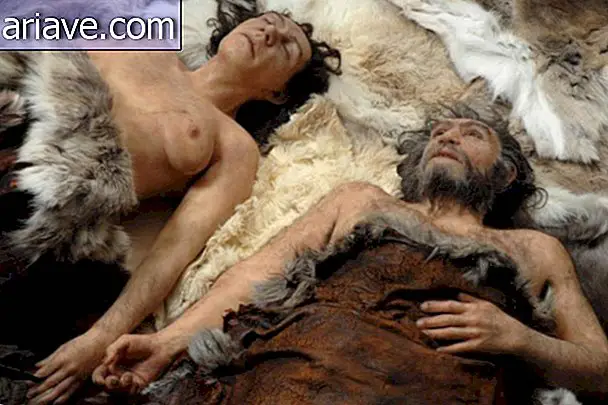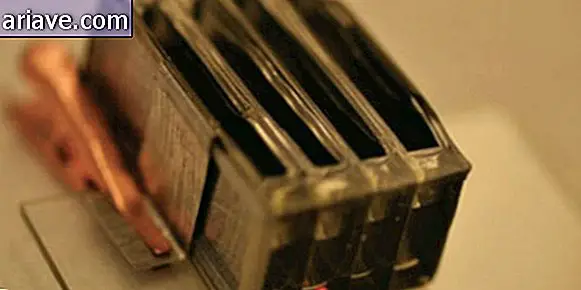10 mysteries about dinosaurs not yet solved by paleontologists
We know more about dinosaurs today than we did a while ago. Paleontologists continue to study, search and discover a new species every two weeks or so, and more accurately build some well-known dinosaurs, such as Tyrannosaurus and Triceratops .
However, despite all this commitment by the experts, dinosaurs still have a number of unresolved issues. There are many questions that intrigue people's minds about these animals. Check out a list of 10 mysteries that continue to perplex Paleontologists.
01 - What was the first dinosaur?

For paleontologists the first species of any major lineage is always a wanted animal. The problem is that the fossil record is made up of parts of life's history, not complete, so that finding pictures from the dawn of dinosaurs actually depends on luck as much as on science.
Fossils found in Poland and Tanzanian skeletons are from animals in these locations, but not especially from dinosaurs. So far, these findings suggest that "terrible lizards" evolved about 245 million years ago, and the best candidate for the oldest dinosaur is a skinny dog-sized animal named Nyasasaurus .
However, new research has yet to be done to prove that this animal is indeed the oldest species in the dinosaur family tree.
02 - Did the dinosaurs have hot or cold blood?

During the height of dinosaur research in the 1970s, the most controversial question of all was whether these animals were warm-blooded creatures or the equivalent of giant cold-blooded lizards. Multiple evidence - including their microstructure and bone growth - suggests that they were very active animals. Soon they would have warm blood.
Paleontologists suggested that, according to the physiology of animals, they needed to keep the high herbivores' body temperature constant and high by fermenting the vegetation. The last hypothesis is that dinosaurs used their muscles to warm up their bodies. However, experts continue to investigate and discuss the issue.
03 - What was the biggest dinosaur?

Of all, the title of "biggest dinosaur" is among the most valued. However, choosing a winner is a complicated task. For example, titanic sauropods have evolved several times, depending on the different places in which they lived and at different times. Species such as Supersaurus, Diplodocus, Argentinosaurus, Futalognkosaurus, among others, were around 100 to 110 meters or more.
But there is a lot of divergence between these numbers, because the largest dinosaurs are only known from partial skeletons, usually less than half the bones down. That means paleontologists have to rely on the smaller cousins of giants to come up with size estimates, and these numbers are often revised when researchers discover new fossils.
With so many huge dinosaurs coming up, we need more complete fossils for the ultimate size verification. Given how many times sauropods have evolved, along with the amount of fossil outcrops yet to be explored, the winner may still be waiting for the discovery. .
04 - What was the dinosaur mating like?

All we know for sure is that each dinosaur began its life from the hatching of an egg. But how the first dinosaurs mated to usher in a new generation is unclear. Paleontologists have yet to find revealing tracks that show male and female coming together, as mating rituals do not fossilize.
Even the basic sexual anatomy of dinosaurs is a mystery. They probably had a cloaca, a single excretory orifice for the urine and reproductive tract, shared by birds and crocodiles. It is also possible that male dinosaurs had an organ similar to that of ducks and ostriches. However, no trace of this organ has ever been found.
05 - Why do some species have ornaments?

Many of our favorite dinosaurs, such as Triceratops, Stegosaurus, among others, carry some types of horns, spikes, plates, ridges and other types of paleontological adornments. How these animals evolved to have such large bizarre structures is one of the most debated points among experts.
The first idea is that these adornments evolved mainly due to the defense and temperature regulation. Paleontologists suggest that dinosaur horns and peaks such as Styracosaurus were developed to more easily identify members of their own species.
Other experts disagree and think that some pieces of the dinosaur's “armor”, such as crest and horn, had a sexual function, such as posters to impress mates. Both functions may have played a very important role, but now paleontologists are debating why some dinosaurs looked so strange about these weird parts.
06 - Did dinosaurs hunt in packs?

While some tracks have shown that predatory dinosaurs like velociraptors and tyrannosaurs always walked together, this does not necessarily mean that they walked side by side. Paleontologists have yet to find something like a set of predatory dinosaur footprints intercepting a victim's trail, preferably with signs of fighting or even a skeleton at the end.
Although bones with several carnivorous dinosaurs have already been found, and these findings relate to the deaths and burials of the animals, but it is unclear whether these animals form a social group or pack fighting for a food source.
07 - Which dinosaurs lived in the night?

One of the most common topics in the Mesozoic world description is that small dinosaurs were more active at night when larger animals slept. The big problem is that it is very difficult to say for sure when the dinosaurs were awake.
Since it is impossible to see dinosaurs' day to day directly, we have to rely on the evidence they themselves have left behind. One study looked at a set of delicate bones in the animals' eyes called sclera rings and found evidence in the anatomy of the eye that prevented light from entering.
Based on this evidence, the study suggests that small predatory dinosaurs, such as Juravenator and Velociraptor, were more likely to be active at night. However, sclera is not very reliable in determining this type of information.
08 - How did dinosaurs learn to fly?

Some dinosaur species no doubt knew how to fly. We can see them doing this as swallows, hawks or another bird. But how did dinosaurs gain this exceptional ability? Paleontologists have considered that these animals took off in various ways.
One of several hypotheses suggested by the experts is that dinosaurs began to thrash before falling to the ground after running after a prey or about to fall off a sloping surface, like a search to get back into the air. Aerodynamic studies on feathered dinosaurs are underway to better discover this moment and get more details.
09 - Which species of dinosaurs were soft?

In addition to early bird-related species such as Anchiornis and Microraptor, a large variety of dinosaurs lined with soft material were found, even huge tyrannosaurs with horns and bristles on their tails. The widespread spread of these strange coatings suggests that other dinosaur lineages, perhaps all of them, had soft limbs in their category.
But how to show a dinosaur with this fur coat is not an easy task, since there is no evidence of this feature present in the last common ancestor or something that has evolved several times. Paleontologists still have much to discover about some unexpected dinosaur strains that remain in mystery.
10 - Why were the dinosaurs extinct?

We still have some animals that come from dinosaurs, but all of their impressive relatives died 66 million years ago. Paleontologists still do not know why. A giant asteroid is known to hit the planet at that time after a prolonged period of ecological change and intense volcanic activity, but experts do not know how this was the trigger for the mass extinction of all dinosaurs.
Not to mention that most of what we know about the disaster comes from North America, and the dinosaurs lived around the world. Paleontologists know the victims and guns of crime, but they still have a lot to rebuild to get to how ecological change happened.











